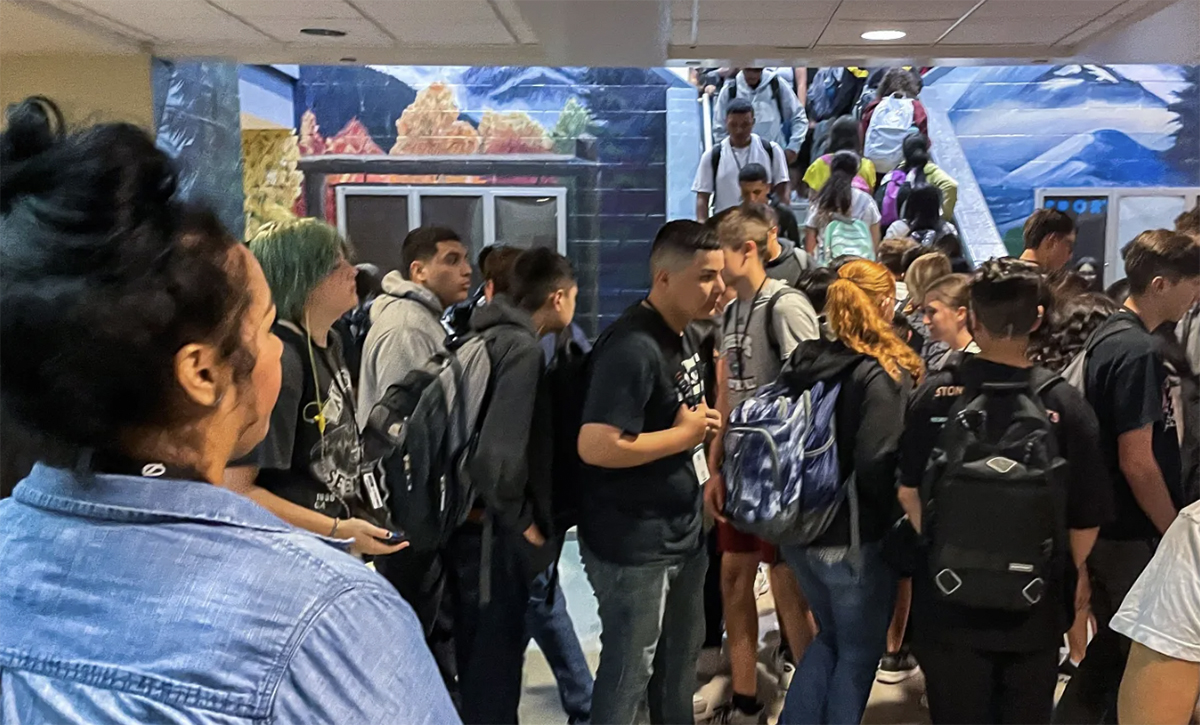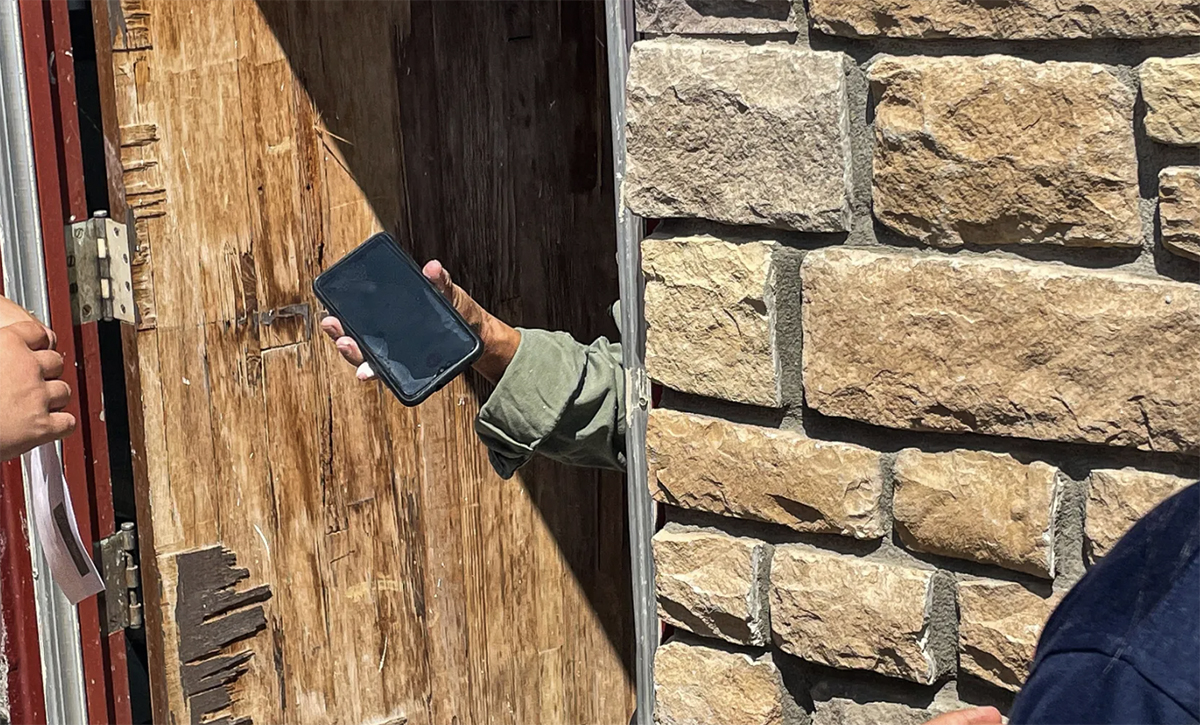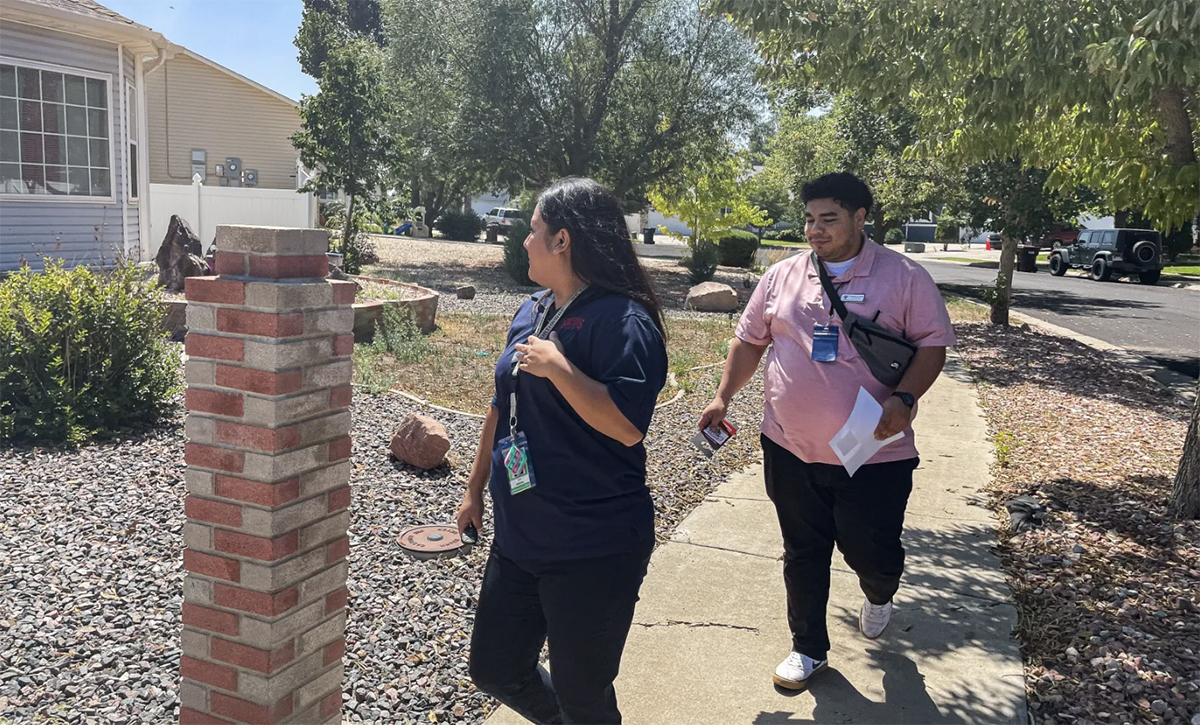Schools Turning to Attendance Detectives to Find Students Missing Amid Pandemic
The Greeley-Evans district in northern Colorado is one of many districts nationwide using federal COVID dollars to fund attendance-boosting efforts

Get stories like this delivered straight to your inbox. Sign up for The 74 Newsletter
The front door of the house was ajar when Domanic Castillo and Julia Madera approached. They were looking for a teenager named Jason who’d missed the first five days of school at Northridge High in Greeley.
The boy wasn’t there, but his father was — dusty from working on renovations inside.
After Castillo explained that they hadn’t seen Jason at school yet, the man quickly dialed the boy’s mother and handed over his cell phone. Madera took the call and, speaking in Spanish, learned that the family planned to send him to one of the district’s alternative schools.

“She said she meant to call,” Madera said as she and Castillo returned to her SUV, ready for the next stop on their home visit list.
Castillo and Madera are on the front lines of a push to get kids back in school after a pandemic that compounded many of the problems that contribute to chronic absenteeism, including student disengagement, academic struggle, and financial insecurity. The rationale is simple: Students have to be in class to learn.
The Greeley-Evans district in northern Colorado is one of many districts nationwide using federal COVID dollars to fund attendance-boosting efforts. The 22,000-student district is in the second year of a three-year, $644,000 contract with the Denver-based consulting company Zero Dropouts to track down missing high schoolers and help them catch up on coursework or credits.
Castillo, the Northridge cheer coach, and Madera, a former secretary at the school, are among 14 Zero Dropouts employees, also known as attendance advocates, embedded in the district’s five high schools this year. They have a host of responsibilities, from helping out in classes and monitoring hallways to calling and visiting the homes of absent students.
The job is part detective work, part social work, and part paperwork.
Before the pandemic, 35% of Greeley-Evans students were chronically absent, meaning they missed 10% or more of school days. That number rose to 40% during 2020-21, well above the state rate of 26%.
Lanny Hass, special projects manager at Zero Dropouts, said advocates help intervene quickly when warning signs pop up: an increase in absences, a grade that’s fallen to a D or F, or problematic behavior. The team works in tandem with counselors, mental health specialists, and other school staff.

“Attendance and course recovery are probably your two biggest challenges at a high school,” said Hass, who formerly served as a high school principal in nearby Loveland.
“The challenges are the same pre- post- and during the pandemic,” he said. “They’re just more pronounced now.”
No falling through the cracks
The four attendance advocates at Northridge High use a small room connected to the main office as their home base. It’s rimmed with computer workstations that often display color-coded spreadsheets showing period-by-period absences and other metrics that help them flag kids in danger of slipping away.
Along the wall is a cardboard box of Famous Amos chocolate chip cookie packs. Students zip into the room occasionally to grab a snack from the box.
On a recent morning, Erin Eckenrode, an advocate who previously worked as a juvenile probation officer, made phone calls looking for 54 students on that day’s no-show list. She talked to some parents, left messages for others, and sometimes hit dead ends.
She did solve a few mysteries. She found that two families had moved out of the district — one, refugees from Ukraine, had relocated to California, and another had moved to a nearby district.
Like high schoolers everywhere, Northridge students struggle for many reasons. They may find their classes boring, face chaotic home lives, or hold jobs that leave them too exhausted for school. About two-thirds of the school’s 1,200 students are eligible for federally subsidized meals, a measure of poverty.
“We have students here that work at the meat factory,” Eckenrode said. “They come to school and then they go home and sleep from four to eight and then they work the overnight shift cleaning the meat plant.”

JBS, the world’s largest meat processing company, operates a plant in Greeley.
Attendance advocates say the pandemic has also eroded students’ social and self-advocacy skills. Teens are dialed into the digital world, but can be muted when it comes to real-life interactions.
Castillo, who helps monitor a class where students work online to catch up, said he’s seen students stare at a locked computer screen rather than raising their hands to ask for help.
“I just stopped going”
Last year, Angel, now a 10th grader at Northridge, missed lots of school — more than 300 class periods last time he checked.
Some of his friends had already dropped out, joining their fathers on construction jobs.
“I started ditching a lot towards the end,” he said. “Sometimes, I just feel school ain’t for me so I just stopped going.”
But Angel eventually came back, and he counts Shena Lopez, one of the school’s attendance advocates, as someone he can relate to at Northridge. Often, he’ll stop by to see her three times a day.
“We’ll just have a good conversation about my day or her day,” he said. “She’s nice to me, so I really like her.”
Connecting with kids in a non-teaching role creates a different relationship, said Lopez.
“It’s different work. We’re their friends. We’re here for them,” she said. “I always tell them I’m going to do whatever it takes to help you succeed.”
Sometimes, the moments that mean the most aren’t what attendance advocates expect.
When a girl named LaWren, a senior cheerleader, recently stopped by, she mentioned how surprised she was when Eckenrode pronounced her name right on the first try during an advisory class.
“Wow, you remembered that?” Eckenrode asked.
“That was like a life-changing moment,” LaWren said. “That’s the first time someone’s gotten my name right in my whole life, my whole 17 years.”
When calls and visits fail
Even when attendance advocates track students down, it can be difficult to get them back in class. Madera recalled one student she worked with last year who stopped coming to school completely after a couple months, his absences a long red stripe on his attendance chart.

The 10th grader didn’t seem to want to go to Northridge or anywhere else. When she dropped off an application for an online program, he threw the papers on the floor. She ended up calling the family more than 20 times, visiting their home four times, and texting the boy’s mother a few times.
Nothing changed until she referred the teen to truancy court.
“I didn’t want it to be like that,” said Madera.
But the move worked, and the teen returned to Northridge last April — at first shy, with his hood pulled over his head. He attended consistently for the last two months and made up some of his missed work. This year, Madera spotted him on the first day of school, Aug. 11.
“Oh my God, he’s here,” she thought.
This originally appeared at Chalkbeat Colorado and is published here in partnership with the Solutions Journalism Exchange.
Get stories like these delivered straight to your inbox. Sign up for The 74 Newsletter

;)